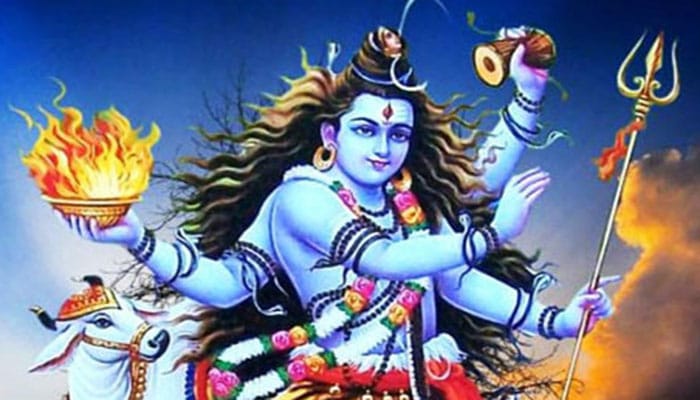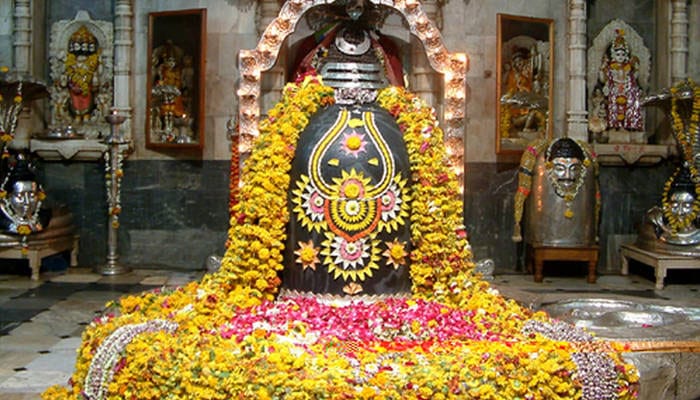The Shiva Lingam or Lingam is a symbol representing Lord Shiva in Hinduism. As the most powerful deity, temples are built in his honor that include a Shiva Lingam, which represents all the energies of the world and beyond.
The popular dogma is that the Shiva Lingam personifies the phallus, the insignia of regenerative power in nature. According to followers of Hinduism, their teachers have taught that this is not only a mistake, but also a serious error. Such a stance, for example, can be found in the teachings of Swami Sivananda.
In addition to the Hindu tradition, the Shiva Lingam has been adopted by various metaphysical disciplines. In this case, it refers to a particular stone from an Indian river that is believed to have healing powers for the mind, body, and soul.
To understand these dual uses of the words Shiva Lingam, let us approach them one at a time and begin with their origin. They are completely different but are connected in their underlying meaning and their connection to Lord Shiva.
1. Shiva Lingam: the symbol of Shiva
In Sanskrit, Linga means a “mark” or a Hindu symbol, which points to an inference. Thus, the Shiva Lingam is a symbol of Lord Shiva: a mark that reminds us of the Almighty Lord, who has no form.

Shiva Lingam speaks to the Hindu devotee in the unmistakable language of silence. It is only the external symbol of the formless being, Lord Shiva, who is the immortal soul sitting in the chambers of your heart saying,“He is your inner dweller, your innermost self or Atman.” It is also identical to the supreme Brahman.
2. The linga as a symbol of creation
The ancient Hindu scripture “Linga Purana” says that the main Linga has no smell, color, taste, etc., and speaks of Prakriti, or nature itself. In the post-Vedic period, the Linga symbol became a Hindu symbol representing the generative power of the deity known as Lord Shiva.
The Linga is personified in the likeness of an egg and manifests the presence of Brahmanda, known in Hindu mythology as the cosmic egg. Linga means that creation is affected by the union of Prakriti and Purusha, the male and female powers of nature. It also means Satya, Jnana, and Ananta: Truth, Knowledge, and Infinity.
3. What does a Hindu Shiva Lingam look like?
A Shiva Lingam consists of three parts. The first of these parts is known as Brahma-Pitha; it represents “the middle”in Hinduism, the second part is known as the Vishnu-Pitha representing “the highest”and the third part known as the Shiva-Pitha.

The typically circular base or peetham (Brahma-Pitha) has an elongated bowl-shaped structure (Vishnu-Pitha) reminiscent of a flat teapot with a spout that has the top cut off. Inside the bowl rests a tall cylinder with a rounded head (Shiva-Pitha). It is in this part of the Shiva Lingam that many people see a phallus.
The Shiva Lingam is most often carved from stone. In Shiva temples, they can be quite large, towering over devotees, although Lingum can also be small, about knee height. Many are adorned with traditional symbols or elaborate carvings, although some are industrial-looking or relatively simple and plain.
4. The most sacred Shiva Lingam in India
Of all the Shiva Lingams in India, some stand out as being of the greatest importance. The temple of the deity known as Lord Mahalinga, located in Tiruvidaimarudur, is also known as Madhyarjuna and is considered the great temple of the deity Shiva in southern India.

Here are some regions of India where other temples dedicated to Shiva can be found:
- Jyotir-lingas: found in Kedarnath, Kashi Vishwanath, Somnath, Baijnath, Rameswar, Ghrusneswar, Bhimshankar, Mahakal, Mallikarjun, Amaleshwar, Nageshwar, and Tryambakeshwar
- Pancha-bhuta Lingas: found in Kalahastishwar, Jambukeshwar, Arunachaleshwar, Ekambareshwar of Kanjivaram, and Nataraja of Chidambaram
5. The quartz Shiva Lingam
The Sphatika linga is made of quartz. It is prescribed for the deepest type of worship of Lord Shiva. This piece has no color of its own, but borrows the color and tone of the substance or essence of the carrier with which it comes into contact. It represents and personifies the Supreme Being without properties or the formless Shiva (Nirguna Brahma).

6. What the Linga means to Hindu devotees
There is a mysterious or indescribable power (or Shakti) in the Linga. It is believed to induce concentration of the mind and help focus attention. It is for this reason that ancient priests, Hindu sages, and seers of India determined the worship of the Linga. This led to every Shiva Lingam being placed inside temples dedicated to Lord Shiva.

For a sincere devotee, the Linga is not simply a block of stone; it is radiant. It speaks to him, elevates him above bodily consciousness, and helps him communicate with the Lord. Lord Rama worshipped the Shiva Lingam in Rameshwaram. Ravana, the scholar, worshipped the golden Linga for its mystical powers.
7. The Shiva Lingam of Metaphysical Disciplines
Drawing from these Hindu beliefs, the Shiva Lingam referred to in metaphysical disciplines refers to a specific stone. It is used as a healing stone, particularly for fertility and sexual potency, as well as for general well-being, power, and energy.
Practitioners of crystal and rock healing believe that the Shiva Lingam is among the most powerful. It is said to bring balance and harmony to those who wear it and to have great healing energy for the seven chakras.
8. Its physical form
Physically, the Shiva Lingam in this context is quite different from that of the Hindu tradition. It is an egg-shaped stone of brown tones that is collected from the Narmada River in the sacred mountains of Mardhata.
Polished to a high shine, the locals sell these stones to spiritual seekers from all over the world. They can vary in size from half an inch long to several feet. The markings are said to represent those found on Lord Shiva’s forehead.
Those who use the Shiva Lingam see it as a symbol of fertility: the phallus represents the male and the egg represents the female. Together, they represent the fundamental creation of life and nature itself, as well as a fundamental spiritual balance.
Lingam stones are used in meditation, carried with the person throughout the day, or used in healing ceremonies and rituals.

